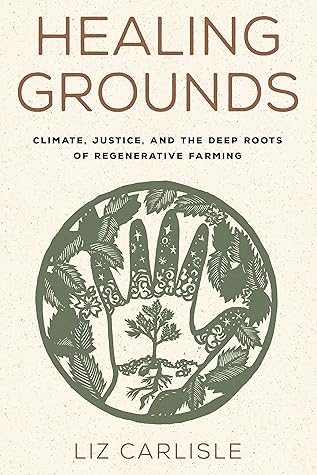Kindle Notes & Highlights
Francesca Cotrufo, a soil ecologist at Colorado State University (and the author of the article on microbial efficiency-matrix stabilization). Soil organic carbon, Cotrufo explained, isn’t all the same. At a minimum, we should understand this heterogenous substance as composed of two separate pools, or “fractions.” Think of these two fractions, Cotrufo told me, like a checking account and a savings account, with plants making the deposits. One fraction is available for meeting day-to-day needs—after all, microbes need to eat too. The other fraction is stashed away in association with mineral
...more
But if you want to build up a savings account too, you need roots.
Concerned by suggestions that fields be covered with monocultures of plants that store the most carbon, she cautioned that soil microbes don’t respond well to such schemes. A healthy community of microbes needs a diverse diet, and if they can’t get it from plants, they’ll break open the soil carbon savings account to get at the nutrients inside, releasing stored carbon back into the atmosphere.
Cotrufo advocates mixtures of grasses (which produce a lot of carbon) and legumes
To adapt to grazing pressure from the massive herbivores, prairie plants evolved to apportion a great deal of their efforts underground to support their extensive root systems. These root systems, in turn, delivered carbon into the soil, where it could be bound up in minerals and stored for eons.
“The thing about native prairies,” explains renowned soil scientist Asmeret Asefaw Berhe, “is not only that they store a lot of carbon, but they stabilize it underground for long periods of time, potentially hundreds or thousands of years.”
“This Indigenous prairie food system was the longest-lived food system in North America,” says Jill Falcon Mackin, a historian of Plains Ojibwe descent who is collaborating with buffalo restoration work at Blackfeet Nation. “It sustained us for thirteen thousand years at least; we believe longer than that.”
soils in the Central Valley as basically hydroponics at this point,” says Berhe, who spent more than a decade of her career just an hour up the road from Moua’s farm, as a professor at UC Merced. “You pump them with enough water and nutrients, you can grow a crop anywhere.”
As the USDA has gradually warmed to agroecological methods—driven largely by farmers’ interest in trying something other than chemicals that run up their debt—cover crops and compost are indeed new innovations.
After all, the Asian continent is where the US organic movement got the idea to use compost and cover crops. As early organic reformers astutely noted, soil-building strategies like these have sustained farming regions from India to Japan for many thousands of years.
Ultimately, Masumoto believes, the future of regenerative agriculture hinges on whether the people needed to practice it are afforded stable access to land. The possibility of belonging to a place


